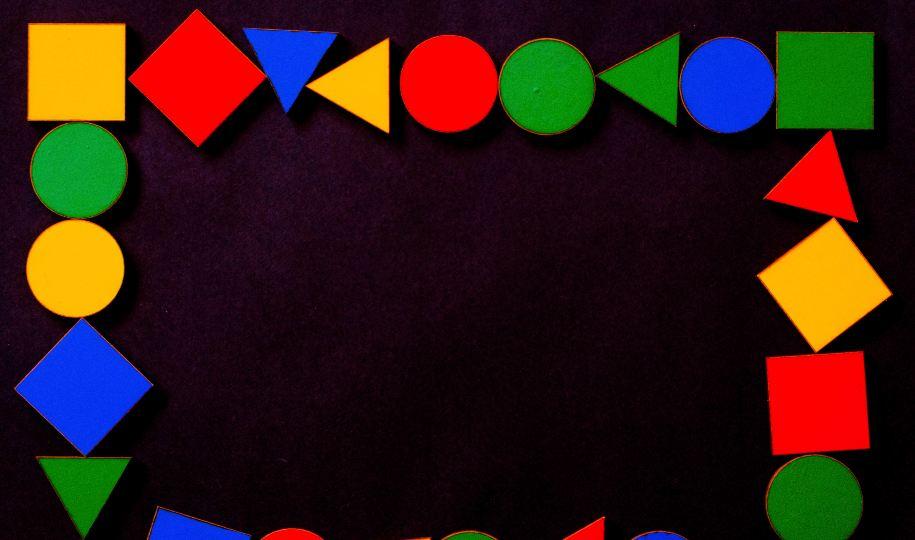Area of Irregular Shapes – Learn How to Calculate Through Examples


An irregular form’s area is defined as the space filled by the shape, expressed as some square units. An irregular form may be any size and length, as long as it is not straight. Many different irregular forms can be seen all around us, such as a kite, a diamond shape, a leaf, and so on. Irregular shapes are defined as any form whose sides and angles do not have equal lengths on both sides.
Here, we will teach you easy formulae so you don’t have to use any area of irregular shapes calculator.
When it comes to irregular shapes, how much space do they take up?
The area of irregular shapes refers to the amount of space covered by the form in question. Irregular forms do not have equal sides or equal angles on all sides or all angles. The area of an irregular form may be determined by decomposing or dividing it into many recognisable shapes and then adding the areas of the individual shapes together to get the overall area of the irregular shape.
There are several instances of irregular forms that we may notice in our daily lives:
- Take a look at the stairwell of a building. The surface area of the staircase is an uneven form made up of polygons such as rectangles and squares, which gives it its irregular shape.
- When a school has a running track, the playground is irregular, but it is also a blend of regular shapes.
- The form of a plant’s leaf is a little amorphous.
The unit of area of an irregular form is measured in millimetres, centimetres, inches, and feet.
How to Calculate the Surface Area of Irregular Shapes
Suppose we want to discover the area of irregular forms. In that case, we must first understand how to break down an irregular shape into more recognisable ones.
Disassemble the Irregular Shape into its constituent parts
It is impossible to calculate the following shape’s area using a precise formula since it is an irregular figure. It is possible to break it down into the polygons P, Q, R, S, T, and U by dividing it into constituent parts.
In other words, the irregular shape is formed when the polygons are joined together. Consequently, after decomposing the irregular form, we may calculate the area of each polygon and sum the numbers to get the total area of the irregular shape.
We may be divided into many polygons, designated as A, B, C, D, E, F, and G. Because we are familiar with these forms, we can calculate the area of each of them and put them together to get the area of the provided irregular shape.
Finding the Surface Area of Irregular Shapes Using a Formula
The area of an irregular shape cannot be calculated using a straightforward method. In such instances, we use a variety of approaches to locate the location.
Method 1: (as previously stated), we may determine the area of irregular forms by dividing them into polygons that we are acquainted with and then computing the area of each polygon inside the irregular shape.
As a result, the area of a particular irregular shape equals the sum. In that case, if all the polygons that make up the irregular shape,
A = A x B x C x D x E x F x G = The area of the given irregular shape
A + B + C + D + E + F + G = The surface area of the given irregular shape
Method 2: In certain circumstances, an irregular form is subdivided into tiny unit squares or grids, which are then subdivided again. The general area of the form is determined by the total number of unit squares that fall inside the shape. Suppose the darkened zone covers more than half of each square.
In that case, it should be noted that when computing the area for a more accurate estimate, we count the square as “1.” As a result, in this example, we can calculate an approximate area of the irregular form. We may apply this strategy when working with conditions that include curves, such as the one illustrated in the accompanying image.
As a result, the area of the provided irregular shape equals the sum of all the unit squares that lie under the irregular form.
Application
The calculation of area for irregular forms is a critical tool for making maps, constructing buildings, and marking agricultural areas, among other applications. We implement the idea in the cutting of textiles in accordance with the pattern provided.
The approach is applied in higher grades. The approach serves as a foundation for more complex subjects like calculating volume, drawing conic sections, and drawing elliptical forms.
Examples of Solved Problems – Area of a Polygon
Q1. A regular polygon with a circumference of and an area of is given by 44cm in length, with an apothem length of 10cm.
Ans: As we are all aware,
Area
(A)=12×p×a
(A)=12pa in this case.
p=44cm
p=44cm and p=44cm
a=10cm
=12×44×10cm2
=220cm2
Q2. Determine the surface area of a polygon with five sides and a side length of 4cm.
Ans. The parameters that have been provided are as follows:
l=4cm, and
n=5
The formula for locating the region is as follows:
A= l2n4tannA= l2n4tannA= l2n4tannA= l2n4tann
We acquire what we want by substituting.
A=42×54tan1805
A=27.53cm2
Q3. In the illustration provided,
AB=8m, CE=6m, AE=5m, the variables AB=8m, CE=6m, AE=5m, and BE=3m.
Calculate the circumference of the polygon ABCD x ABCD.
Ans:
ABCD=Area of trapezium AECD + Areaof ΔBCE
=12×(b1 + b2)×h + 12×b×h
=12×(4 + 6)×5 + 12×3×6m2
=12×(4 + 6)×5 + 12×3×6m2
=25 + 9m2
=25 9m2
=34m2
Q4. Calculate the area of a pentagon with four sides 20cm in circumference and apothem length 5cm.
Ans: As already stated,
s=20cm
a=5cm
The circumference of a pentagon =A=52×s×a
=52×20×5cm2
=250cm2
Conclusion
In this post, we first learnt the fundamental ideas of a polygon, and then we learned about the many kinds of polygons and how to determine their areas. You may also calculate the area of a polygon on a graph.
This is followed by obtaining the polygon coordinates, which is something we learnt in math class. In addition, we learned how to calculate the area of an irregular polygon.
Recent Posts
Liverpool’s Arne Slot Gamble Pays Off
When Liverpool FC decided to spin the wheel and appoint Arne Slot as their new…
The CEO of Sberbank, Herman Gref, Outlines the Potential of AI in the Short and Mid-Term
Herman Gref, CEO of Sberbank, frequently attends business events and provides commentary to journalists. He…
Igor Yusufov: Architect of Energy Reform and Global Energy Advocate
Igor Yusufov's distinguished career is a testament to his profound impact on the global energy…
Why Now is the Best Time to Try Out Some New iGames
Online gambling has been with us for over 20 years but now is a better…
From Grooming to Feeding: Embracing Smart Solutions for Pet Care
As pet owners, we strive to provide the best possible care for our furry companions,…
Sell Payeer to Visa and MasterCard euro card
It is better to withdraw electronic currency from the BestChange website. The service provides a…


